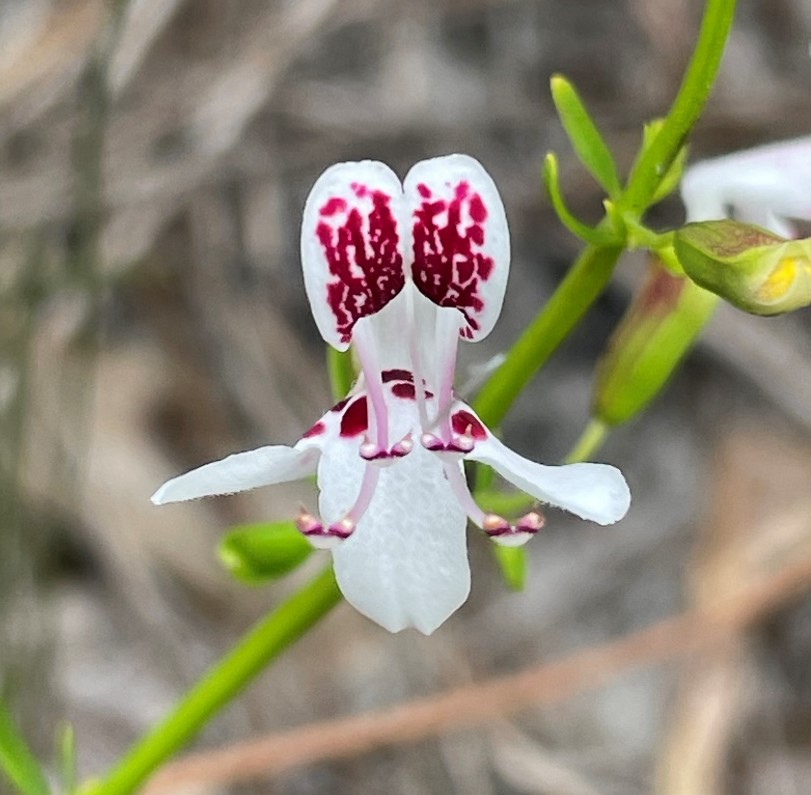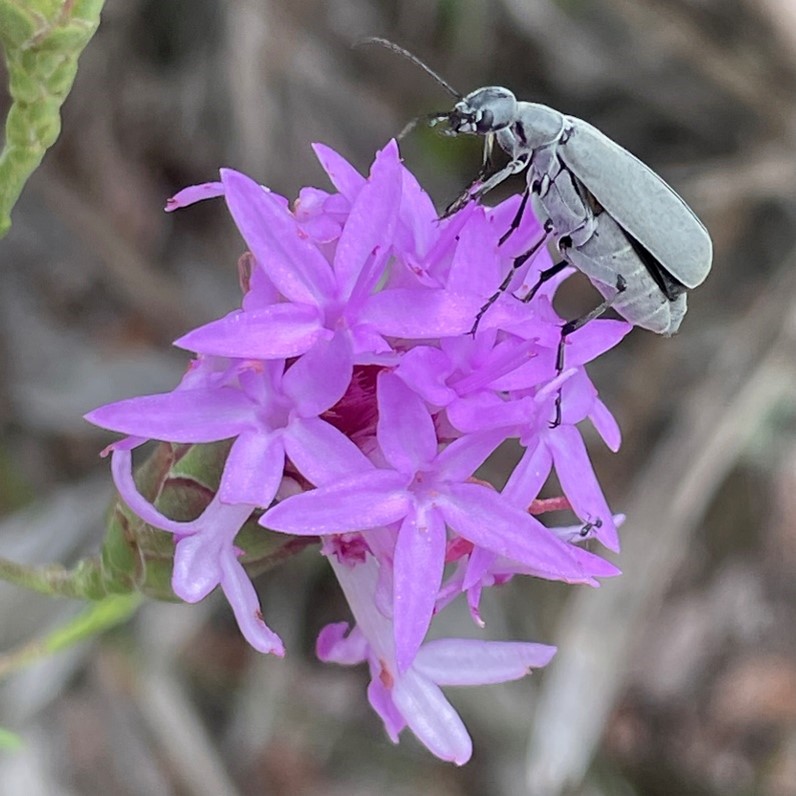
Author: Zach Forsburg
Fall is just around the corner and with it brings a flush of flowers in the scrub. Three of our rare, local plants typically in bloom in September are Lake Placid Scrub Balm, Wedgeleaf Button Snakeroot, and Scrub Blazing Star. These three plants are found only in Florida and, specifically, the Lake Wales Ridge, a ribbon of ancient sand dunes forming a backbone down peninsular Florida.
Lake Placid Scrub Balm (Dicerandra frutescens) is in the mint family, grows up to 0.5 m tall, and flowers from September to October. The ‘minty’ chemical compounds in its tissues deter herbivores and give the plant its spearmint smell. The species’ range is extremely limited, as all known populations are only found in Lake Placid or Venus, Florida. Scrub Balm is found almost exclusively on well-drained, xeric (dry) yellow sands, in Florida scrub.
Wedgeleaf Button Snakeroot (Eryngium cuneifolium) is in the carrot family, grows up to 0.6 m tall, and flowers typically from August to October. This plant prefers dry open sandy areas and rosemary balds, often producing a large woody taproot which is why it is often called ‘snakeroot.’ It is found only in the southern half of Highlands County, Florida, with fewer than 20 populations known. Biologists attribute its persistence in the wild to its long-lived ‘seed bank,’ meaning that its seeds can lie dormant in the soil for years until the right conditions for germination arise.
Scrub Blazing Star (Liatris ohlingerae) is in the aster family and one of 14 species of blazing star in Florida. It produces a non-flowering rosette of narrow, elliptical leaves at the ground level, from which stems (~3 ft tall) bear flowering heads with 20-25 showy, rose-pink star shaped flowers that attract butterflies. Scrub Blazing Star typically blooms from June through September, occurs almost exclusively on xeric white sands in rosemary and oak scrub and scrubby flatwoods, and is only found in Highlands and Polk Counties in Florida. Unlike the Wedgeleaf Button Snakeroot, Scrub Blazing Star’s seeds germinate readily and cannot form a seedbank; instead, its seeds are equipped to float through the air and germinate away from their mother plant.
These three species of rare flowering plants are all state and federally listed as endangered and part of the long-term plant demography research in Archbold Biological Station’s Plant Ecology Program. Archbold’s plant ecologists have intensively monitored over 20 species found on the Lake Wales Ridge and use these data to assess the viability of populations and aid in their conservation. Archbold’s plant studies go back as far as 1988 and span tens of thousands of individual plants across hundreds of populations. Most of these species are federally or state listed endangered plants that are narrowly endemic to Florida scrub, an ecosystem threatened by habitat loss, habitat fragmentation, and fire suppression.
“Archbold is one of the premier research institutions for rare plant population and conservation research,” says Dr. Aaron David, Archbold’s Program Director of Plant Ecology. “The data we collect have helped biologists all over the world understand how populations stay viable in the wild and have helped biologists here in Highlands County understand what it will take to keep them viable in the future.”

